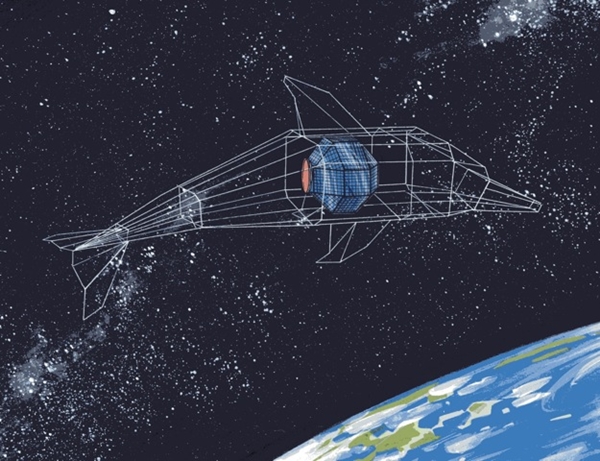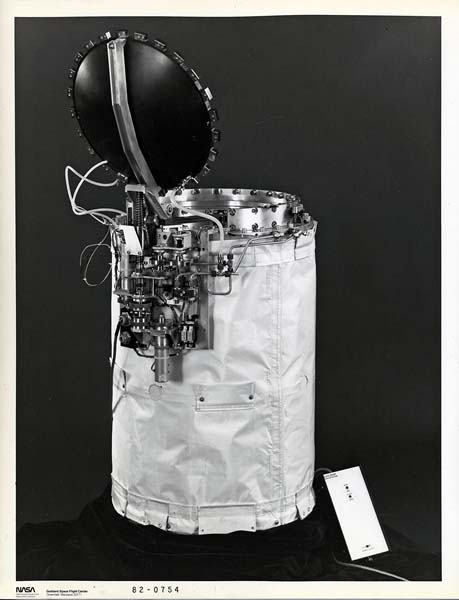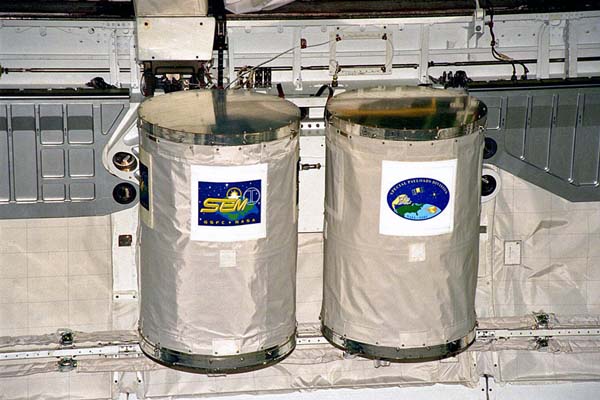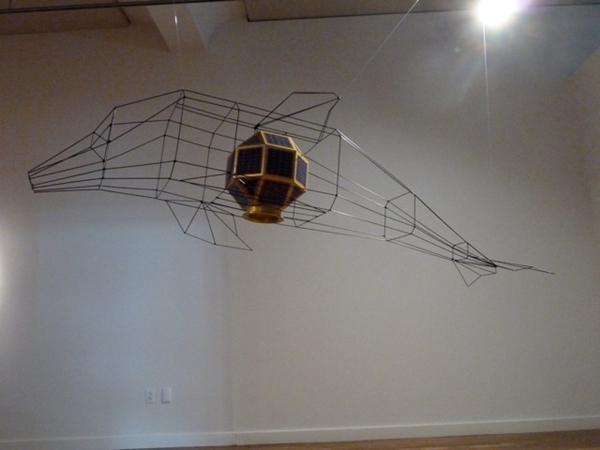Report
An Art and Technology Payload for the Space Shuttle by Richard Clar
- Published: Wednesday, April 24 2013 07:38
The first real opportunity for individuals or institutions in the world to access space at a very reasonable cost arose from NASA’s Get-Away-Special Program (GAS) that was announced in 1976.
Artists were not excluded per se from the GAS Program as long as they could satisfy the basic requirement that GAS payloads must have some human or technical benefit. NASA would not fly art just for art’s sake and was very strict about this requirement. Subsequently, four artists managed to meet this criterion and have their art payloads accepted into NASA’s GAS Program. The first artist was Joseph McShane from Prescott, Arizona (1977). The second artist was Joe Davis from MIT’s Center for Advanced Visual Studies (1982). The third artist was Richard Clar from Los Angeles, California (1982). And the fourth artist was Al Wunderlich from the Rhode Island School of Design (1983). Of these four art payloads, only one actually flew on the U.S. Space Shuttle. Joseph McShane’s GAS payload #038 was carried into space aboard the Space Shuttle Challenger in October 1984. This was a very important moment not only in space art but in art history as well. NASA’s own literature refers to Joseph McShane as the first “Space Artist.”
All four of NASA’s GAS Program art payloads that were accepted share the fact that they were technically feasible and at a cost that was realistic. To this date, no other national space agency has offered anything like the GAS Program.

(Figure 1) Spaceflight Dolphin sculpture/satellite - Illustration by Edgar Duncan1982
Artist Richard Clar conceived Spaceflight Dolphin (SFD) in 1982. (Figure 1) Approved by NASA, SFD is an interdisciplinary art-in-space SETI (Search for Extraterrestrial Intelligence) project that was designed to be deployed into low-Earth orbit from a GAS canister with a motorized door assembly (Figure 2) and ejection mechanism carried inside the cargo bay of the U.S. Space Shuttle. (Figure 3) Once in space the dolphin sculpture/satellite would transmit a signal modulated by dolphin “voices” that may be detected or sensed by an extraterrestrial intelligence (ETI). As the sculpture/satellite orbits the Earth, the dolphin voices would be monitored on the Internet and in various museums around the world, providing a link between different peoples and cultures on our own planet. Spaceflight Dolphin would add to the history of human beings communicating through art with symbols that transcend the boundaries of time and culture.
 (Figure 2) NASA Get-Away-Special (GAS) canister with motorized door assembly
(Figure 2) NASA Get-Away-Special (GAS) canister with motorized door assembly

(Figure 3) Two NASA GAS canisters inside the cargo bay of the U.S. Space Shuttle
While NASA terminated the GAS Program in late Fall of 2004, other opportunities are developing now for Spaceflight Dolphin to be launched by one of the new start-up space companies. For example, XCOR’s Lynx Mark III would be an excellent choice to launch Spaceflight Dolphin into low-Earth orbit.
Free Enterprise: The Art of Citizen Space Exploration, currently on view at the University of California Riverside’s ARTSBlock Galleries, is the first major exhibition in the U.S. concentrating on Space Art.
Curated by Tyler Stallings and Marko Peljhan, 25 international artists and institutions were invited to participate in this groundbreaking show. For this exhibition, UCR built a full-scale model of the Spaceflight Dolphin sculpture/satellite that has now become part of the permanent collection of UCR’s ARTSblock Galleries. (Figure 4) In this 1:32 minute video Tyler Stallings (curator of the UCR Sweeney Art Gallery) discusses Space Flight Dolphin.
 (Figure 4) Spaceflight Dolphin sculpture/satellite full-scale model - Free Enterprise exhibition University of California Riverside 2013
(Figure 4) Spaceflight Dolphin sculpture/satellite full-scale model - Free Enterprise exhibition University of California Riverside 2013
As stated in my paper in Leonardo Volume 26 Nr. 4 1993 “…Spaceflight Dolphin is just a beginning, a symbol waiting to be discovered on the wall of a cave called outer space. In outer space, where art, science and philosophy will eventually blend, the opportunity to contribute to the improvement of the human condition and quality of life is vast. In the words of Jean-Paul Sartre: ‘Man is not the sum of what he has, but the totality of what he does not yet have, of what he might have.”
For the complete concept of Spaceflight Dolphin, including the Communication Modes of Dolphins, NASA’s Get-Away-Special, and the Philosophy of Spaceflight Dolphin, please continue with the paper published in Leonardo Volume 26 Nr. 4 1993 pp. 293-296.
More at: http://www.arttechnologies.com/site-2005/projects/space-dolphin2.html
###








Comments